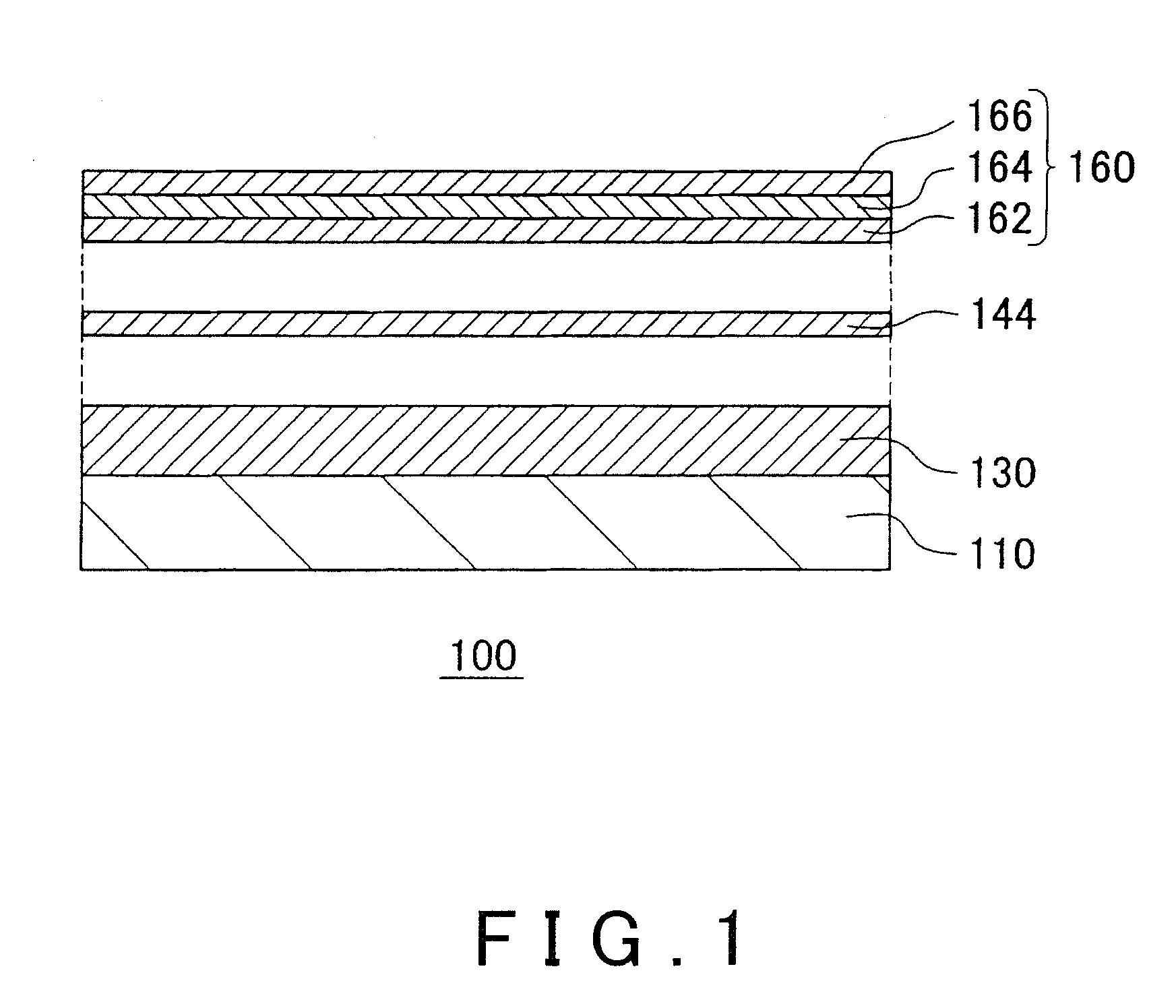Semiconductor wafer, method of producing semiconductor wafer, and electronic device
a semiconductor wafer and semiconductor technology, applied in the direction of semiconductor devices, electrical devices, transistors, etc., can solve the problems of leakage current, insufficient device isolation, and difficulty in optimizing the characteristics of both devices formed on the single semiconductor wafer
- Summary
- Abstract
- Description
- Claims
- Application Information
AI Technical Summary
Benefits of technology
Problems solved by technology
Method used
Image
Examples
example experiment 1
[0098]In Example Experiment 1, a semiconductor wafer was fabricated that includes all the semiconductor layers of the semiconductor wafer 200 shown in FIG. 2 except for the semiconductor layers from the contact layer 249 to the contact layer 269. A GaAs single-crystal wafer was used as the first semiconductor 210. An i-type GaAs was formed as the buffer layer 220 and oxygen-doped i-type AlGaAs was formed as the carrier-trapping layer 232.
[0099]As the depleted semiconductor 234, a lightly-doped p-type semiconductor layer was formed that has five sets of alternately stacked GaAs and AlGaAs while the molar supply ratio of the Group 5 source to the Group 3 source was regulated. As the carrier-supplying semiconductor 242 and the carrier-supplying semiconductor 246, n-type AlGaAs was formed. As the carrier movement layer 244, i-type InGaAs was formed. As the barrier-forming semiconductor 248, i-type AlGaAs was formed.
[0100]The respective semiconductor layers from the buffer semiconductor ...
example experiment 2
[0101]In Example Experiment 2, a semiconductor wafer was fabricated that is the same as the semiconductor wafer of Example Experiment 1 except for that the semiconductor layer corresponding to the depleted semiconductor 234 was a low-concentration impurity layer with n carrier type. In Example Experiment 2, since the semiconductor layer corresponding to the depleted semiconductor 234 is a low-concentration n-type layer, the fabricated semiconductor wafer had no depleted region.
[0102]The withstand voltages of the semiconductor wafers fabricated in Example Experiment 1 and Example Experiment 2 were measured and respectively 34 V for Example Experiment 1 and 7 V for Example Experiment 2. This result proves that Example Experiment 1 achieves improved withstand voltage since the depleted semiconductor 234 forms a depleted region. Here, the withstand voltage is defined as a voltage that yields a current density of 5 mA / cm2 between the first semiconductor 210 and the carrier-supplying semi...
example experiment 3
(Example Experiment 3
[0103]A semiconductor wafer was fabricated that is the same as the semiconductor wafer of Example Experiment 1 except for that the thickness of the carrier-trapping layer 232 was varied among 20 nm, 100 nm, and 150 nm, the oxygen concentration of the carrier-trapping layer 232 was set at 7×1019 cm−3, and the thickness of the depleted semiconductor 234 was set at 300 nm. The withstand voltage of the fabricated semiconductor wafer is shown in FIG. 6 as a function of the thickness of the carrier-trapping layer 232. FIG. 6 reveals that the withstand voltage increases as the thickness of the carrier-trapping layer 232 increases. In particular, the withstand voltage was remarkably improved when the carrier-trapping layer 232 had a thickness of 100 nm or more.
PUM
 Login to View More
Login to View More Abstract
Description
Claims
Application Information
 Login to View More
Login to View More - R&D
- Intellectual Property
- Life Sciences
- Materials
- Tech Scout
- Unparalleled Data Quality
- Higher Quality Content
- 60% Fewer Hallucinations
Browse by: Latest US Patents, China's latest patents, Technical Efficacy Thesaurus, Application Domain, Technology Topic, Popular Technical Reports.
© 2025 PatSnap. All rights reserved.Legal|Privacy policy|Modern Slavery Act Transparency Statement|Sitemap|About US| Contact US: help@patsnap.com



